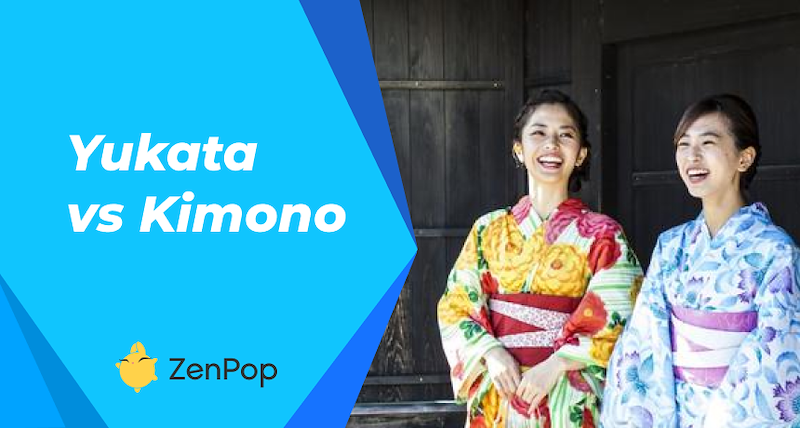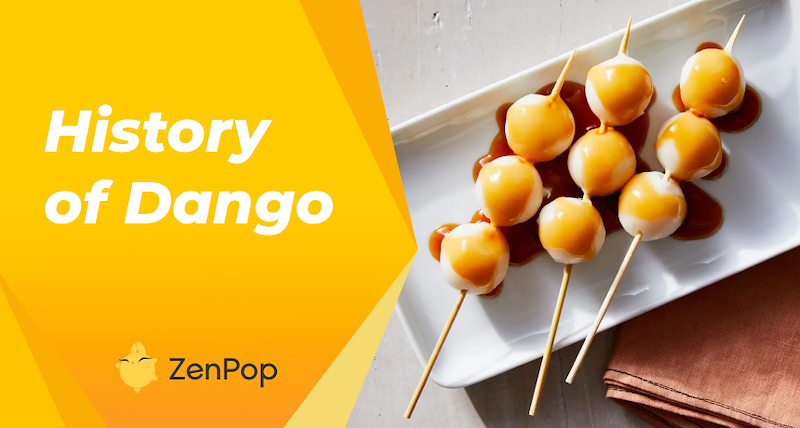
</title><meta name="robots" content="noindex"> The History of Dango: Japan's beloved rice dumpling!
Are you a fan of Japanese desserts? If so, get ready to satisfy your sweet tooth and learn about the fascinating history of Dango - those small, chewy balls of goodness that are often served on a skewer. Dango has been a popular dessert in Japan for centuries, and it's no wonder why. This beloved treat is both delicious and versatile, with various flavors, forms, and cultural significance.
Today, Dango can be found in various shapes, colors, and flavors. From the classic plain version to the staple green, white and pink Dango. It can be enjoyed plain or coated with various sauces or toppings. In this blog post, we'll explore the Dango history, including its origins, cultural significance, and popular variations.
What is The Origin of Dango
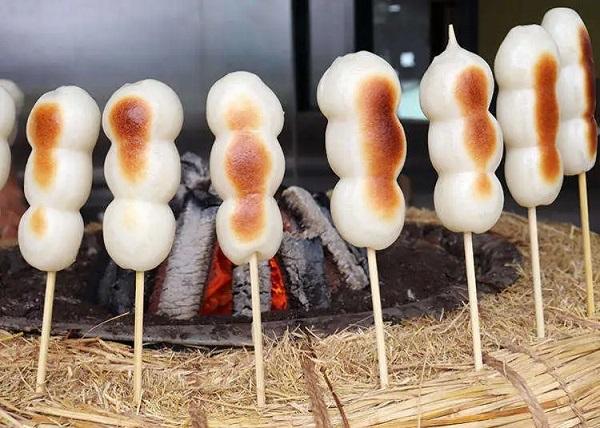
Originally, the dumplings were used as offerings for Gods in shrines. The Japanese emperor during the 13th - 14th century was purifying his spirit and body when he saw giant bubbles forming in the water his cupped hands held. He visualized the head and body of a human when he saw the bubbles so he used this image as an inspiration for Dango to be given to the gods.
It was made in the image of a person by skewering 5 dumplings to represent the head, arms and legs of a person. Sounds weird, but let’s be thankful that real humans weren’t offered instead. Now, you can find around 3 to 5 Dangos skewered in a stick during festivals. Each festival has a unique way that Dango is served and it can be served differently in various regions in Japan.
Initially, Dango was a simple snack made with rice flour and water. However, over time, other ingredients were added, including sugar, soy sauce, and different flavors like green tea and sakura (cherry blossom).
When was Dango invented?
The exact origin of Dango is unclear, but it's believed that the dessert has been enjoyed in Japan since ancient times as far back as the Jomon period which was in 10000 to 300 BCE. However, the earliest written record of Dango dates back to the Heian period (794-1185), where it was mentioned in a poem by the famous Japanese poet, Sei Shonagon. In the Jomon period period, Dango was made using nuts ground into flour-like powder and mixed with boiling rice. During the Muromachi period, 1336 - 1573, skewering of Dango became popularized. During the Edo period, Dango was already popular during festivals like Hanami.
What Does Dango Represent?
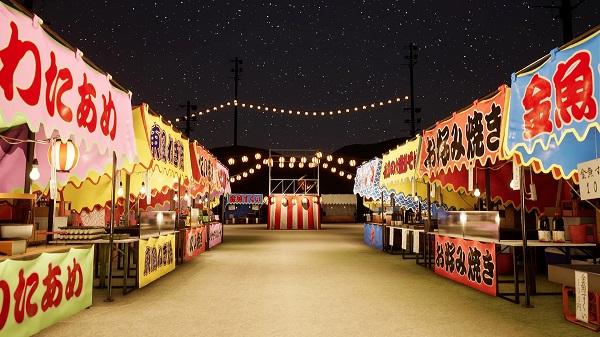
Dango holds significant cultural value in Japan and is often enjoyed during traditional events and celebrations. Here are some examples:
- Hanami: During the sakura (cherry blossom) season in Japan, it's common for people to enjoy a picnic under the trees while admiring the beautiful flowers. Dango is often served during these gatherings.
- Hinamatsuri: Also known as Girls' Day or Doll's Day, Hinamatsuri is celebrated on March 3rd in Japan. Dango is a popular sweet to enjoy during this festival. Read our article here to learn about this awesome festival for girls.
Types of Dango
Dango can be enjoyed in various forms and flavors. Here are some of the most popular variations:
Mitarashi Dango
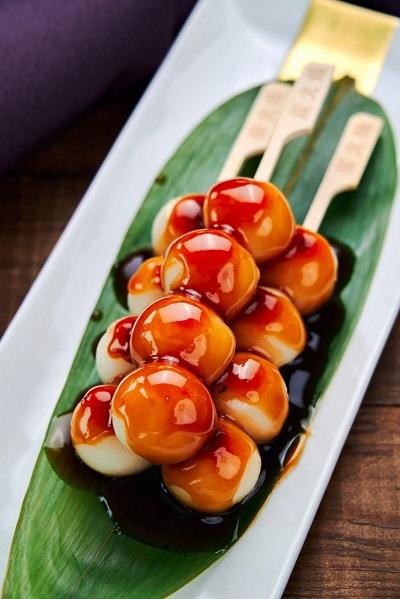
This is one of the most popular types of Dango, consisting of plain Dango balls coated in a sweet and savory soy sauce glaze. In fact, it is one of the most popular Japanese snack periods. Mitarashi Dango was served as an offering at the Kyoto Shimogamo shrine during one of the city’s annual festivals called Aoi Matsuri. As far back as the Taisho era, the glaze of brown sugar was introduced to go with the round balls.Now, the sauces have evolved into different variations and street vendors sell Mitarashi Dango.
Hanami Dango
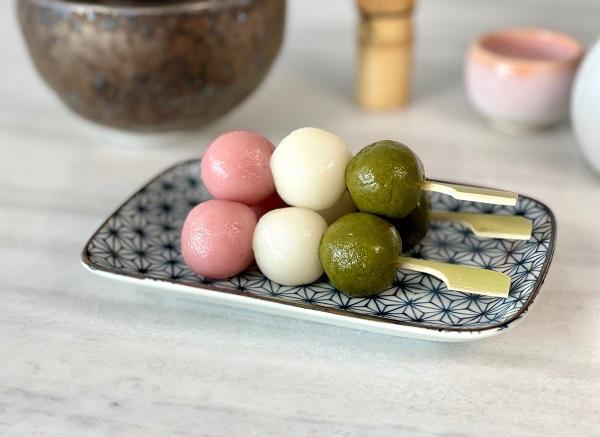
These Dango balls come in three colors – pink, white, and green – representing the cherry blossom season. They are sold during Hanami festivals in Japan and are typically served skewered and topped with a sweet soy sauce glaze. Hanami is one of Japan’s most popular festivals. To enjoy this festival, attendees buy the Dango treats and eat them. It would surprise you to know that hanami Dango was introduced in 1598 when the warlord Toyotomu Hideyoshi held grand banquets to enjoy Hanami festivals.
Some people say that the pink Dango color represents the sakura or cherry blossoms, the white represents sake and the green mugwort. Formerly, the colors were made by infusing these natural ingredients while making Dango but nowadays they are colored artificially. It is an interesting treat that you won’t be able to get enough of.
How is Dango Served?
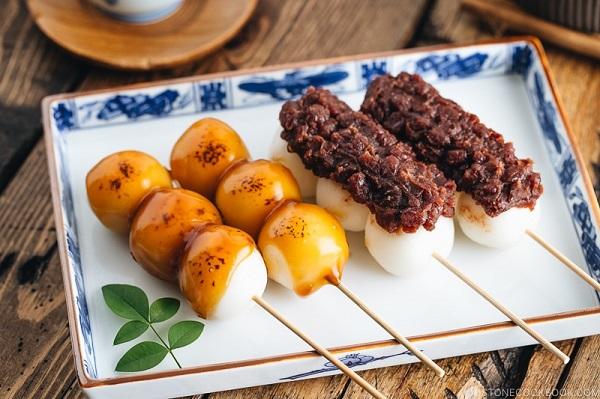
Dango is typically made by mixing rice flour with water to form a dough. The dough is then rolled into small balls and boiled in hot water until they float to the surface. The boiled Dango balls are then immediately transferred to a bowl of cold water to stop the cooking process and to give them a chewy texture.
Once the Dango balls are prepared, they can be served in a variety of ways, such as:
- Skewered: Dango balls are often skewered on bamboo sticks and served in groups of three to five.
- Coated: Dango can be coated in various sweet or savory sauces, such as soy sauce, sweet miso, or sweetened red bean paste.
- Toppings: Dango can be topped with different ingredients, such as kinako (roasted soybean flour), sesame seeds, grated coconut, or chopped nuts.
- Grilled: Some varieties of Dango, such as yaki Dango, are grilled or roasted over an open flame to give them a crispy exterior.
Dango can be enjoyed as a dessert or as a snack at any time of the day. It's a perfect accompaniment to green tea, and it's also a popular street food in Japan. Dango has a rich history in Japan and holds significant cultural value. Whether enjoyed during a traditional event or as a sweet snack, it is a delicious dessert with various flavors and forms.
Are you excited to learn more about Japan? From your home, you can get a taste of awesome Japanese snacks.
This article was originally written by our freelance writer Umm-Kulthum Abdulkareem and edited by us.


